Meeting Minutes Template
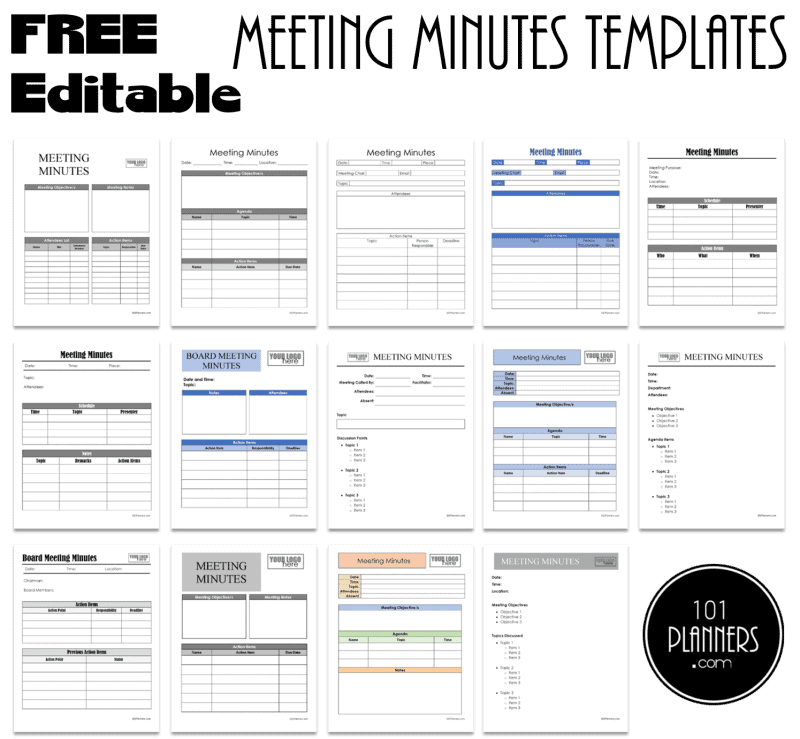
While not every gathering has meeting minutes, the most effective ones do. Meeting minutes do not have to be wordy, but they do need to be clearly structured and easy to use in order to be effective. They should summarize the action items discussed during the meeting to ensure it is effective and productive.
What Are Meeting Minutes?
What are “minutes of meeting”? The title can be intimidating because no one can keep up with writing a minute-by-minute account of a meeting. Actually, while the meeting minutes are called minutes, like the measurement of time, the original meaning was minute as in minutiae, meaning the details of what happened. This is as opposed to the broad agenda of what was planned for the meeting. See meeting agenda template.
Meeting minutes are a written record of what happened during a meeting.
These will be read by people who didn’t go to the meeting. It will also be read by diligent attendees who want to know what the takeaways from the meeting were. What are the next action steps? What was decided? Who is working on what things? People who were assigned tasks may consult the minutes so they can remember what their next steps are. Managers may consult to ensure that everyone completed the tasks that were assigned to them. These are all questions people may have when they come looking to the meeting minutes for answers, so it’s important the minutes of the meeting (sometimes referred to as MOM) cover these details.
Meeting Minutes Template
The MOM template is available in Word and Excel format. Therefore, if you need a MOM format in Excel then select the Excel version. If you prefer a document format then select the MS Word version. You can open the MOM template Excel with Google Sheets and the Word template with Google Docs.
Simple Meeting Minutes Template
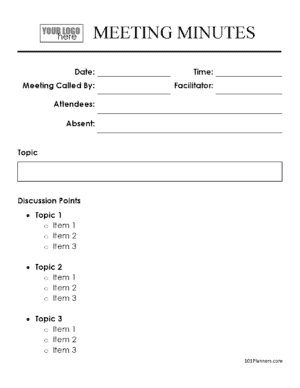
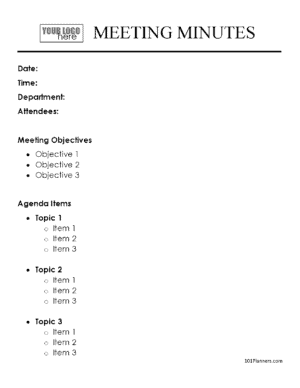
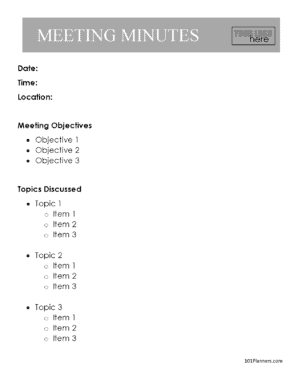
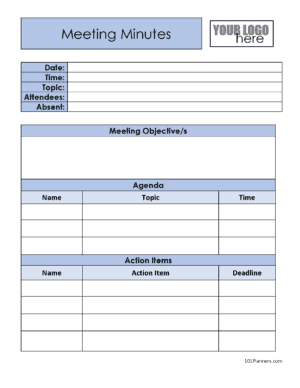
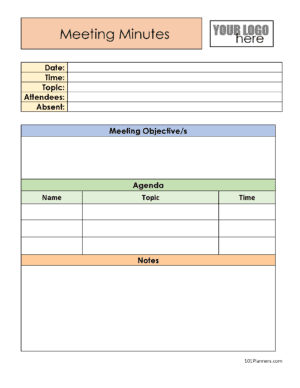
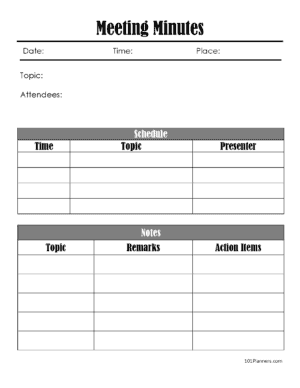
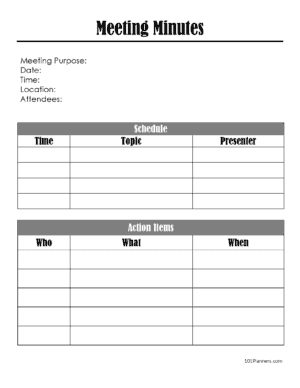
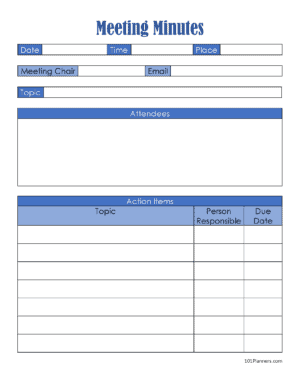
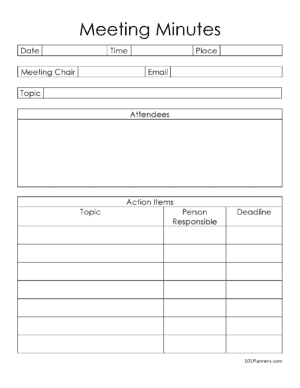
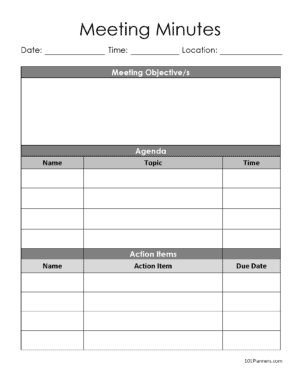
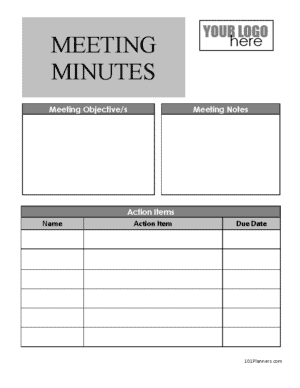
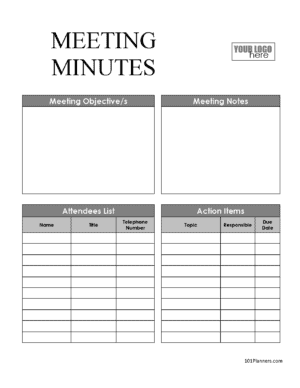
Board Meeting Minutes Template
Board meeting minutes are a formal record of the discussions, decisions, and actions taken during a board of directors’ meeting. They serve to document the board’s activities, ensuring accountability, transparency, and compliance with legal and regulatory requirements.
Here is a meeting minutes example for a board meeting but you can use any of the templates on this page and adapt them to your needs since the titles are editable.
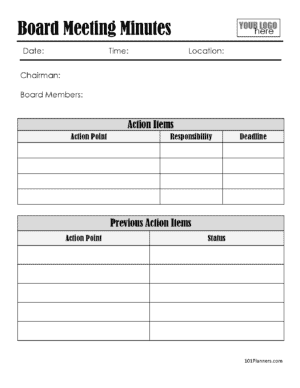
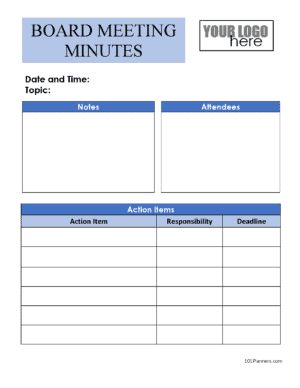
Project Meeting
Project meeting minutes are a detailed record of the discussions, progress updates, decisions, and action items from a project meeting. They help track the project’s status, outline tasks, and document any issues and resolutions to ensure effective project management and accountability.


Team Meeting
Team meeting minutes are a concise record of the discussions, decisions, and tasks assigned during a team meeting. They help ensure that all team members are aligned on goals, actions, and responsibilities, facilitating effective communication and collaboration.

Minutes of Meeting Format (MOM Format)
Unless you are taking formal meeting minutes in places such as the parliament there is usually no specific format for minutes of meetings. It is more important for them to be effective than to be written in a specific format.
We offer 14 different possible formats for you to edit as you please. Choose the minutes of meeting format that is closest to the one that you want to use and edit it to reach your ideal format.
If you find a meeting notes template you like as-is, you can download the editable PDF or the image file. You can type on the editable PDF file and then save or print it.
If not, select the meeting minutes template Word version if you want to make any changes to the layout or wording. If you prefer to use a spreadsheet for minute taking, then select the meeting minutes template Excel version.
Once you are satisfied with the format, add a summary of the meeting.
Typical Sections in a MOM Format
- Meeting Title:
- The subject or title of the meeting.
- Date and Time:
- When the meeting took place.
- Location:
- Where the meeting was held (if applicable).
- Attendees:
- List of all participants in the meeting.
- Agenda:
- The list of topics to be discussed during the meeting.
- Minutes:
- Discussion Points: Key points discussed during the meeting.
- Decisions Made: Decisions that were made during the meeting.
- Action Items: Tasks or actions that need to be completed, along with the person responsible and the deadline.
- Next Meeting:
- Date and time for the next scheduled meeting, if applicable.
- Additional Notes:
Example MOM Format
This is a minutes of meeting sample to give you an idea how the template looks when complete.
Meeting Title: Project Kickoff Meeting
Date and Time: May 24, 2024, 10:00 AM
Location: Conference Room B
Attendees:
- John Doe
- Jane Smith
- Alice Johnson
- Bob Brown
Agenda:
- Project Introduction
- Roles and Responsibilities
- Project Timeline
- Budget Overview
- Q&A
Minutes:
Discussion Points:
- Project Introduction: Overview of the project objectives and scope.
- Roles and Responsibilities: Discussion on the roles of each team member.
- Project Timeline: Presentation of the project timeline and key milestones.
- Budget Overview: Review of the project budget and financial considerations.
- Q&A: Open floor for questions from attendees.
Decisions Made:
- Approved project timeline with minor adjustments.
- Confirmed roles and responsibilities as outlined.
Action Items:
- John Doe: Finalize project timeline by May 26, 2024.
- Jane Smith: Prepare detailed budget report by May 28, 2024.
Next Meeting:
Additional Notes:
- Ensure all team members have access to project documentation.
How to open the templates in Google Docs?
- Download any of the Word documents on this page and save it on your computer.
- Open your Google Drive and click “New”.
- Select “File upload”.
- Select the meeting minutes template Word doc and click “Open”. The minutes of meeting sample that you selected will now upload.
- Double-click the document that you uploaded.
- Click “Open with”.
- Select “Google Docs”.
How to Write Minutes of Meeting
This quick outline will help you if you are not sure how to write minutes in a meeting as a secretary or as a participant.
Writing effective minutes of a meeting involves capturing the essential details of the discussion, decisions made, and any actions agreed upon.
Here’s a step-by-step guide to help you write clear and concise minutes:
1. Prepare Before the Meeting
- Review the meeting agenda: Understand the key topics and objectives of the meeting. When you use our free meeting agenda template then you will already have a list of topics which will make it easier to prepare minutes.
- Select a MOM template: Use a consistent format for your minutes. Select any of the templates above. Include sections for the meeting’s date, time, location, attendees, agenda items, and action items. We have included 14 different templates to ensure that at least one will be close to the format you need. Find a minutes of meeting sample that best suits your needs.
- Know the participants: Familiarize yourself with the names and roles of attendees.
2. During the Meeting
Print the template for meeting minutes that you are going to use and keep it in front of you so you can start filling out information such as names, date, time, and other essential details as the meeting progresses. This will save you time later and ensure you don’t forget any important details.
- Record essential information:
- Date, time, and location of the meeting.
- List of attendees: Include who is present, absent, and any special guests. It may be helpful to have a list of expected attendees ahead of time, and then you can mark them as they arrive. If you don’t know the attendees, it is okay to ask everyone to introduce themselves at the start of a meeting.
- Approval of previous minutes: Note if the previous meeting’s minutes were approved or any corrections were made.
3. After the Meeting
- Review your notes immediately: While the discussion is fresh in your mind, ensure your notes are clear and complete.
- Type the minutes: Use your template to organize the notes into a structured document.
- Be concise: Focus on clarity and brevity, avoiding unnecessary details.
- Distribute the minutes: Send the minutes to all attendees and any relevant parties, ideally within 24-48 hours after the meeting.
4. Sample Minutes Format
- Heading: Include the organization name, date, time, and location of the meeting.
- Attendees: List everyone who attended, along with their titles.
- Approval of Previous Minutes: Mention if the previous minutes were approved or note any corrections.
- Agenda Items:
- Item 1: Summary of discussion, decisions made, action items, and assigned responsibilities.
- Item 2: Continue with each agenda item following the same format.
5. Final Review
- Proofread: Check for any grammatical errors or inconsistencies.
- Seek approval: If required, have the minutes reviewed by the meeting chairperson before distributing.
By following these steps, you’ll ensure your minutes are accurate, organized, and useful for all meeting participants.
How To Make Meetings More Effective
Making meetings more effective involves careful planning, clear communication, and ensuring that all participants are engaged and focused. Here are some strategies to help you run more productive and efficient meetings:
1. Set Clear Objectives
- Define the purpose: Ensure every meeting has a clear goal or set of objectives. Ask yourself, “What do we need to accomplish by the end of this meeting?”
- Create an agenda: Outline the topics to be discussed and allocate specific time slots for each. Share the meeting agenda with participants in advance so they can prepare.
Break the Agenda into Topics
- Time allocation: Break down the agenda into specific topics and dedicate a set amount of time to each. This helps keep the meeting focused and ensures that all important issues are addressed. Make sure that when you create your agenda, you put your most vital discussion topics first. Sometimes people are tempted to save the best for last or lead into those topics, but you may run out of time. Therefore, it is important that you focus on your most important topics first. Use your time wisely.
- Manage time wisely: If you find you are going over the allotted time for a topic, consider moving on to the next agenda item or scheduling a follow-up discussion. This helps maintain the meeting’s flow and ensures all topics are covered within the allotted time.
2. Invite the Right People
- Limit attendance: Only invite people who are necessary for the discussion or decision-making process. This keeps the meeting focused and prevents unnecessary distractions.
- Assign roles: Designate a facilitator to guide the discussion, a timekeeper to manage the schedule, and a note-taker to capture key points and decisions.
3. Start and End on Time
- Punctuality is key: Begin the meeting on time, even if some participants are late. This encourages a culture of punctuality.
- Set a firm end time: Stick to the scheduled end time to respect everyone’s time. If the discussion needs more time, schedule a follow-up meeting.
- If your agenda has notes on time for each discussion topic, stick to that timeline. If the topic isn’t wrapping up and the time is up, then you are allowed to say that this will need to be handled at another time because this meeting doesn’t have room for all of this.
4. Encourage Participation
- Engage everyone: Ensure all participants have the opportunity to contribute. Ask for input from quieter members and avoid letting any one person dominate the discussion.
- Stay on topic: If the conversation veers off course, gently steer it back to the agenda items.
5. Focus on Decisions and Action Items
- Prioritize decision-making: Use meetings to make decisions, not just to discuss issues. Clearly outline the next steps and assign action items with deadlines.
- Summarize at the end: Recap the key decisions and assigned tasks before the meeting ends to ensure everyone is on the same page. Either prepare meeting notes during the meeting or summarize at the end. If that isn’t possible or appropriate then send the minutes after the meeting to all participants.
- List clear action items: Be specific on action items. If you expect a participant or a specific person to do something after this meeting, state that very clearly. Add a due date for each action item.
6. Use Technology Wisely
- Leverage tools: Use video conferencing tools, project management software, or collaboration platforms to facilitate communication, especially for remote teams.
- Minimize distractions: Encourage participants to turn off notifications and avoid multitasking during the meeting.
7. Follow Up
- Distribute minutes promptly: Share the meeting minutes with all participants, highlighting key decisions, action items, and deadlines. This document should include clear action items, expectations, deadlines, and any key decisions made during the meeting. Prompt distribution ensures that everyone is aligned and knows what is expected moving forward. See templates above.
- Monitor progress: Follow up on action items before the next meeting to ensure tasks are being completed.
8. Evaluate and Improve
- Seek feedback: Regularly ask participants for feedback on how to improve future meetings. Use this input to refine your meeting practices.
- Reflect on outcomes: Assess whether the meeting objectives were met and whether the meeting was necessary in the first place. Consider whether some issues could have been handled through email or a quick phone call instead.
By implementing these strategies, you can make your meetings more efficient, purposeful, and productive, ensuring that they contribute positively to your organization’s goals.
My Personal Experience
During my years with a non-profit organization, one of my key responsibilities was setting up the Board of Governors meetings and writing the meeting minutes. I have to admit, I was pretty awful at it in the beginning. By the time I sat down to write the minutes, I had often forgotten what had been discussed and who attended. It was frustrating, and I knew I needed to improve.
Things began to turn around when I started using a template for the minutes and made it a point to prepare them immediately after the meeting. This simple change made a huge difference, and I quickly became much better at capturing the essential details. Just as I was getting really good at it, I left the organization. However, by then, I had built up a collection of templates that I’m happy to be able to share with others.
Since then, I’ve continued to add to my collection, creating different templates tailored to various companies, meetings, and events. Now, I have a well-rounded selection that I’m proud to offer to anyone looking to improve their own meeting minutes.
Click to rate this page!
[Total: 3 Average: 4.7 ]



















